
Concept explainers
(a)
Interpretation:
The object, a circular clock face is asymmetric or not has to be given.
Concept Introduction:
Symmetric:
When a molecule is rotated by an axis of symmetry, the original and the rotated species will be indistinguishable from one another are said to be symmetric. In simple terms, when a molecule is divided into two parts, if the two parts are equal means they have symmetry.
Example:
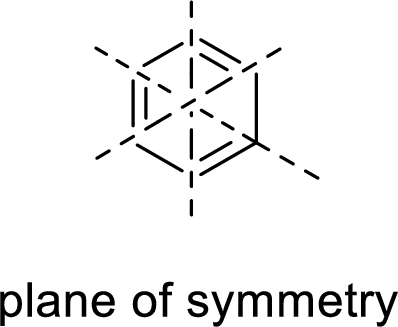
Asymmetric:
The molecules which has no plane of symmetry or center of symmetry are said to be asymmetric. It depends on the presence of asymmetric atom in the molecule. When a molecule is divided into two parts, if the two parts are unequal means they are asymmetric.
Example:
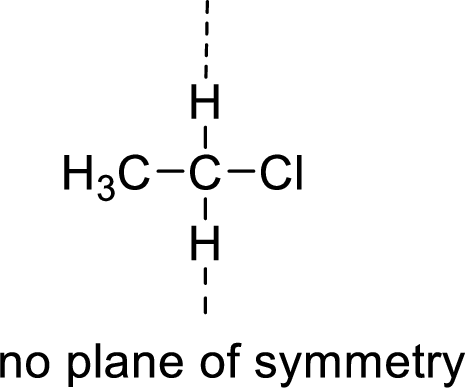
(b)
Interpretation:
The object, a football is asymmetric or not has to be given.
Concept Introduction:
Symmetric:
When a molecule is rotated by an axis of symmetry, the original and the rotated species will be indistinguishable from one another are said to be symmetric. In simple terms, when a molecule is divided into two parts, if the two parts are equal means they have symmetry.
Example:
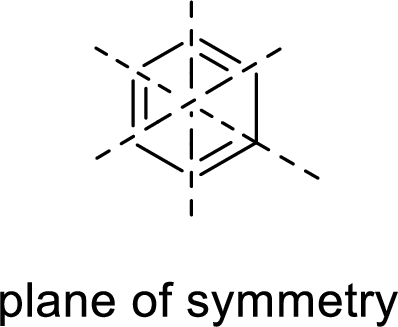
Asymmetric:
The molecules which has no plane of symmetry or center of symmetry are said to be asymmetric. It depends on the presence of asymmetric atom in the molecule. When a molecule is divided into two parts, if the two parts are unequal means they are asymmetric.
Example:
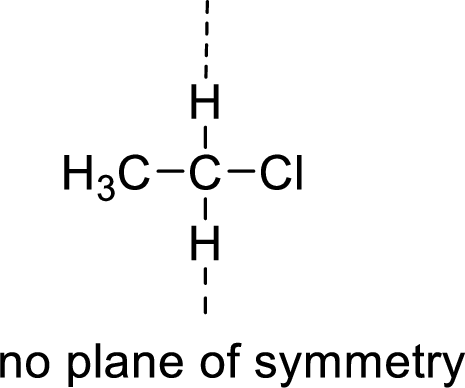
(c)
Interpretation:
The object, a dime is asymmetric or not has to be given.
Concept Introduction:
Symmetric:
When a molecule is rotated by an axis of symmetry, the original and the rotated species will be indistinguishable from one another are said to be symmetric. In simple terms, when a molecule is divided into two parts, if the two parts are equal means they have symmetry.
Example:
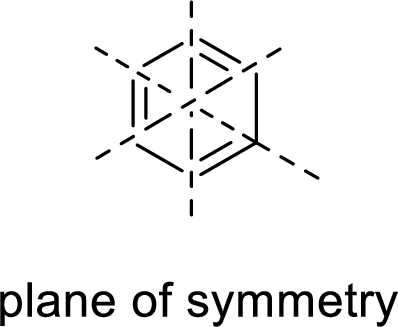
Asymmetric:
The molecules which has no plane of symmetry or center of symmetry are said to be asymmetric. It depends on the presence of asymmetric atom in the molecule. When a molecule is divided into two parts, if the two parts are unequal means they are asymmetric.
Example:
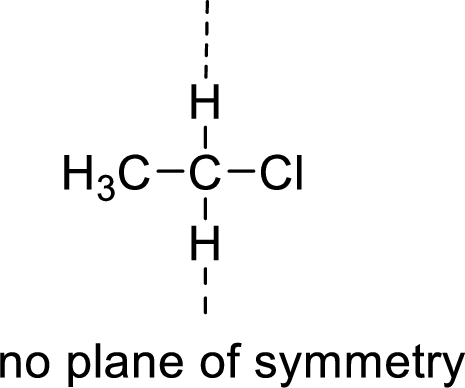
(d)
Interpretation:
The object, a brick is asymmetric or not has to be given.
Concept Introduction:
Symmetric:
When a molecule is rotated by an axis of symmetry, the original and the rotated species will be indistinguishable from one another are said to be symmetric. In simple terms, when a molecule is divided into two parts, if the two parts are equal means they have symmetry.
Example:
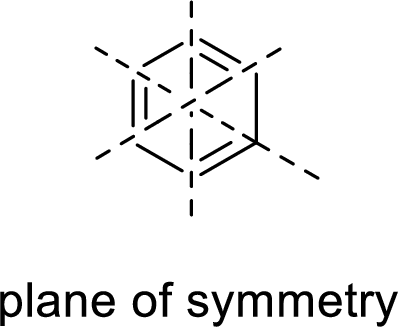
Asymmetric:
The molecules which has no plane of symmetry or center of symmetry are said to be asymmetric. It depends on the presence of asymmetric atom in the molecule. When a molecule is divided into two parts, if the two parts are unequal means they are asymmetric.
Example:
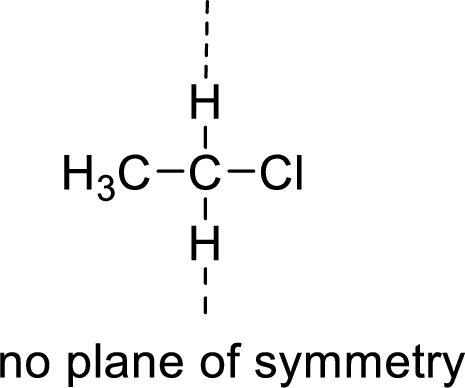
(e)
Interpretation:
The object, a hammer is asymmetric or not has to be given.
Concept Introduction:
Symmetric:
When a molecule is rotated by an axis of symmetry, the original and the rotated species will be indistinguishable from one another are said to be symmetric. In simple terms, when a molecule is divided into two parts, if the two parts are equal means they have symmetry.
Example:
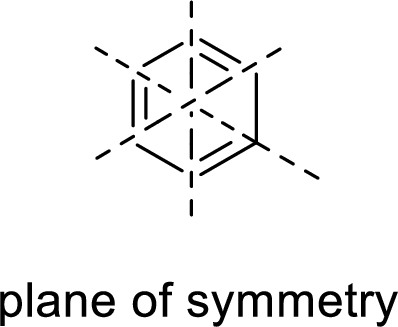
Asymmetric:
The molecules which has no plane of symmetry or center of symmetry are said to be asymmetric. It depends on the presence of asymmetric atom in the molecule. When a molecule is divided into two parts, if the two parts are unequal means they are asymmetric.
Example:
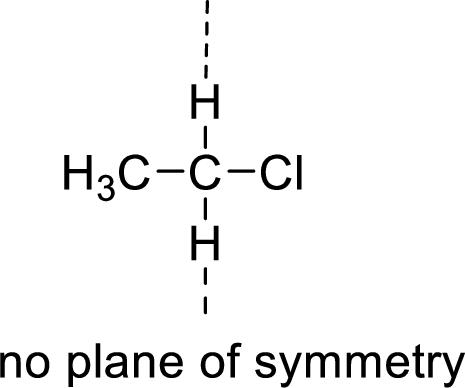
(f)
Interpretation:
The object, a spring is asymmetric or not has to be given.
Concept Introduction:
Symmetric:
When a molecule is rotated by an axis of symmetry, the original and the rotated species will be indistinguishable from one another are said to be symmetric. In simple terms, when a molecule is divided into two parts, if the two parts are equal means they have symmetry.
Example:
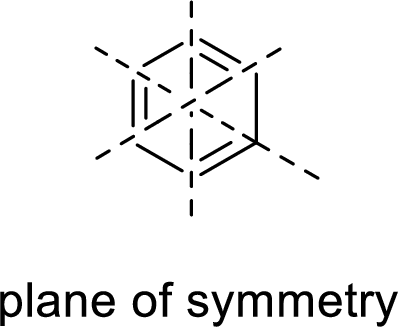
Asymmetric:
The molecules which has no plane of symmetry or center of symmetry are said to be asymmetric. It depends on the presence of asymmetric atom in the molecule. When a molecule is divided into two parts, if the two parts are unequal means they are asymmetric.
Example:
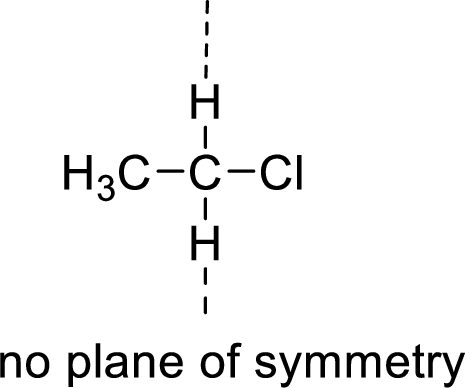
Want to see the full answer?
Check out a sample textbook solution
Chapter 15 Solutions
CHEMISTRY:MOLECULAR...V.2 W/ACCESS
- Draw the Michael Adduct and the final product of the Robinson annulation reaction. Ignore inorganic byproducts.arrow_forwardDraw the Michael adduct and final product of the Robinson annulation reaction. Ignore inorganic byproductsarrow_forwardPost Lab Questions. 1) Draw the mechanism of your Diels-Alder cycloaddition. 2) Only one isomer of product is formed in the Diels-Alder cycloaddition. Why? 3) Imagine that you used isoprene as diene - in that case you don't have to worry about assigning endo vs exo. Draw the "endo" and "exo" products of the Diels-Alder reaction between isoprene and maleic anhydride, and explain why the distinction is irrelevant here. 4) This does not hold for other dienes. Draw the exo and endo products of the reaction of cyclohexadiene with maleic anhydride. Make sure you label your answers properly as endo or exo. 100 °C Xylenes ??? 5) Calculate the process mass intensity for your specific reaction (make sure to use your actual amounts of reagent).arrow_forward
- Indicate the product(s) A, B C and D that are formed in the reaction: H + NH-NH-CH [A+B] [C+D] hydrazonesarrow_forwardHow can you prepare a 6 mL solution of 6% H2O2, if we have a bottle of 30% H2O2?arrow_forwardHow many mL of H2O2 from the 30% bottle must be collected to prepare 6 mL of 6% H2O2.arrow_forward
- Indicate the product(s) B and C that are formed in the reaction: HN' OCH HC1 B + mayoritario C minoritario OCH3arrow_forwardIndicate the product(s) that are formed in the reaction: NH-NH, OCH3 -H₂O OCH3arrow_forward21.38 Arrange the molecules in each set in order of increasing acidity (from least acidic to most acidic). OH OH SH NH2 8 NH3 OH (b) OH OH OH (c) & & & CH3 NO2 21.39 Explain the trends in the acidity of phenol and the monofluoro derivatives of phenol. OH OH OH OH PK 10.0 PK 8.81 PK 9.28 PK 9.81arrow_forward
- identify which spectrum is for acetaminophen and which is for phenacetinarrow_forwardThe Concept of Aromaticity 21.15 State the number of 2p orbital electrons in each molecule or ion. (a) (b) (e) (f) (c) (d) (h) (i) DA (k) 21.16 Which of the molecules and ions given in Problem 21.15 are aromatic according to the Hückel criteria? Which, if planar, would be antiaromatic? 21.17 Which of the following structures are considered aromatic according to the Hückel criteria? ---0-0 (a) (b) (c) (d) (e) (h) H -H .8.0- 21.18 Which of the molecules and ions from Problem 21.17 have electrons donated by a heteroatom?arrow_forward1. Show the steps necessary to make 2-methyl-4-nonene using a Wittig reaction. Start with triphenylphosphine and an alkyl halide. After that you may use any other organic or inorganic reagents. 2. Write in the product of this reaction: CH3 CH₂ (C6H5)₂CuLi H₂O+arrow_forward
 ChemistryChemistryISBN:9781305957404Author:Steven S. Zumdahl, Susan A. Zumdahl, Donald J. DeCostePublisher:Cengage Learning
ChemistryChemistryISBN:9781305957404Author:Steven S. Zumdahl, Susan A. Zumdahl, Donald J. DeCostePublisher:Cengage Learning ChemistryChemistryISBN:9781259911156Author:Raymond Chang Dr., Jason Overby ProfessorPublisher:McGraw-Hill Education
ChemistryChemistryISBN:9781259911156Author:Raymond Chang Dr., Jason Overby ProfessorPublisher:McGraw-Hill Education Principles of Instrumental AnalysisChemistryISBN:9781305577213Author:Douglas A. Skoog, F. James Holler, Stanley R. CrouchPublisher:Cengage Learning
Principles of Instrumental AnalysisChemistryISBN:9781305577213Author:Douglas A. Skoog, F. James Holler, Stanley R. CrouchPublisher:Cengage Learning Organic ChemistryChemistryISBN:9780078021558Author:Janice Gorzynski Smith Dr.Publisher:McGraw-Hill Education
Organic ChemistryChemistryISBN:9780078021558Author:Janice Gorzynski Smith Dr.Publisher:McGraw-Hill Education Chemistry: Principles and ReactionsChemistryISBN:9781305079373Author:William L. Masterton, Cecile N. HurleyPublisher:Cengage Learning
Chemistry: Principles and ReactionsChemistryISBN:9781305079373Author:William L. Masterton, Cecile N. HurleyPublisher:Cengage Learning Elementary Principles of Chemical Processes, Bind...ChemistryISBN:9781118431221Author:Richard M. Felder, Ronald W. Rousseau, Lisa G. BullardPublisher:WILEY
Elementary Principles of Chemical Processes, Bind...ChemistryISBN:9781118431221Author:Richard M. Felder, Ronald W. Rousseau, Lisa G. BullardPublisher:WILEY





